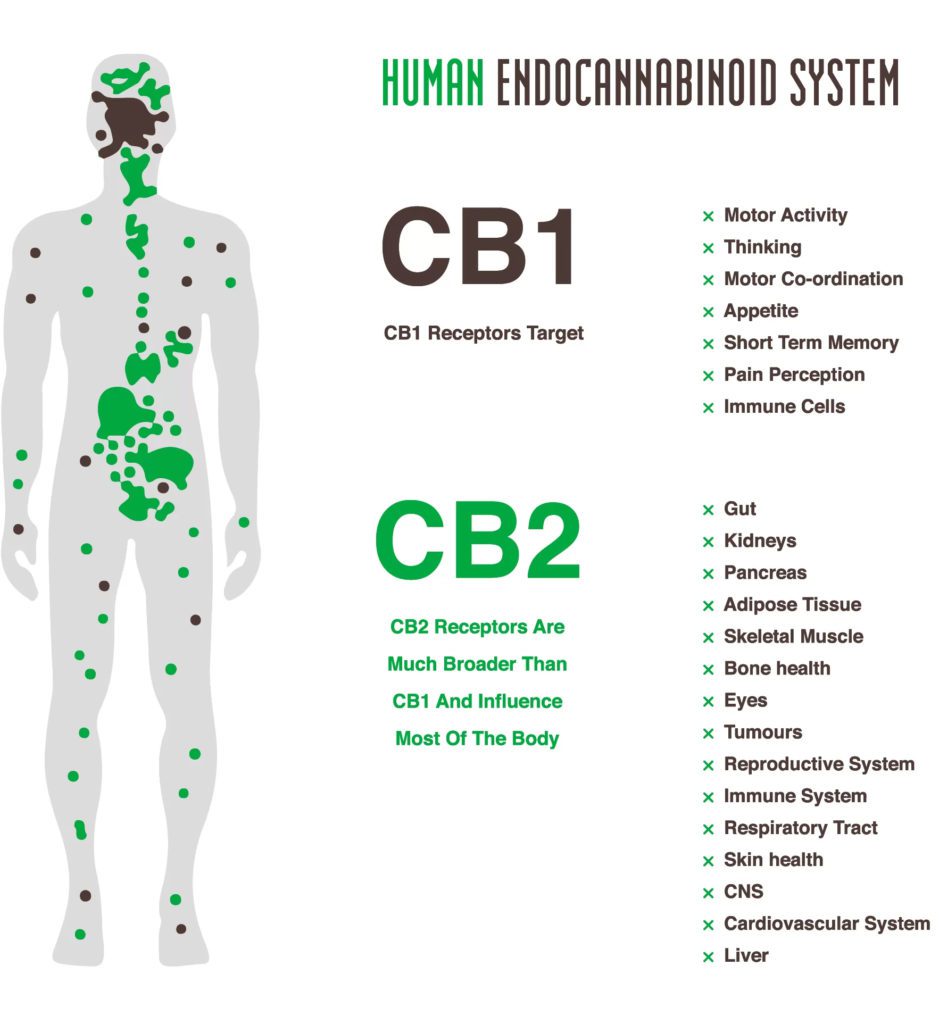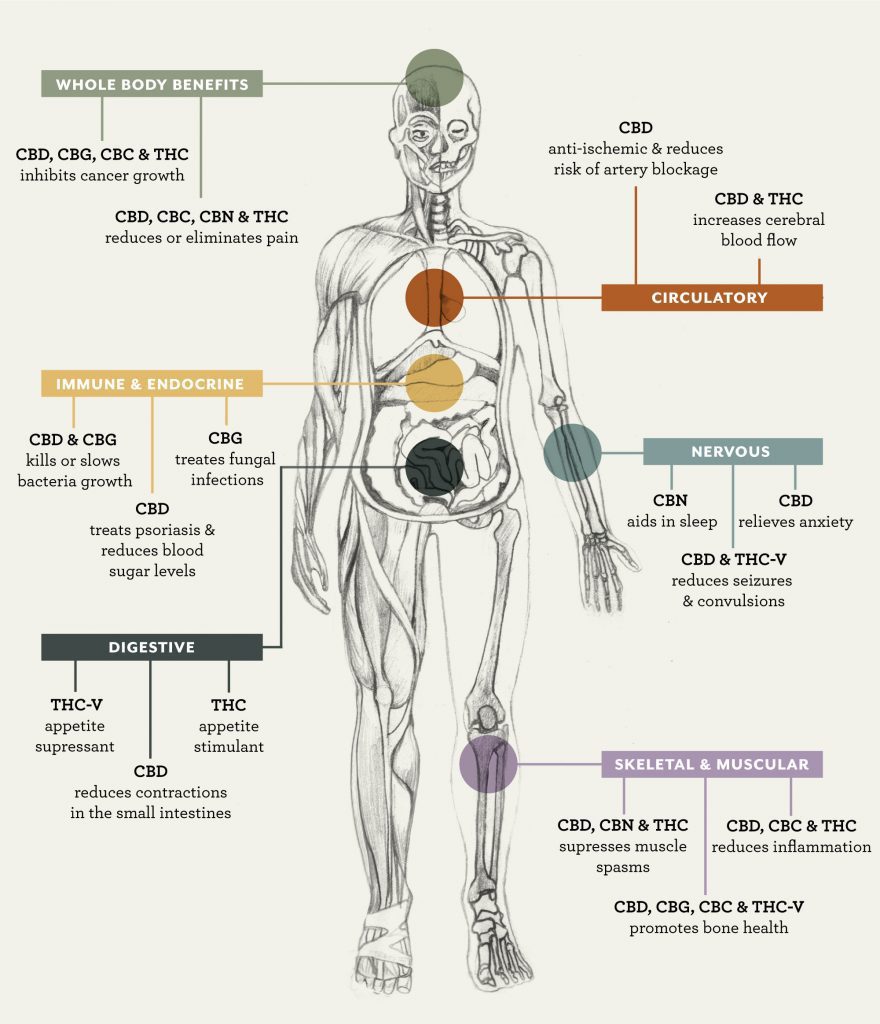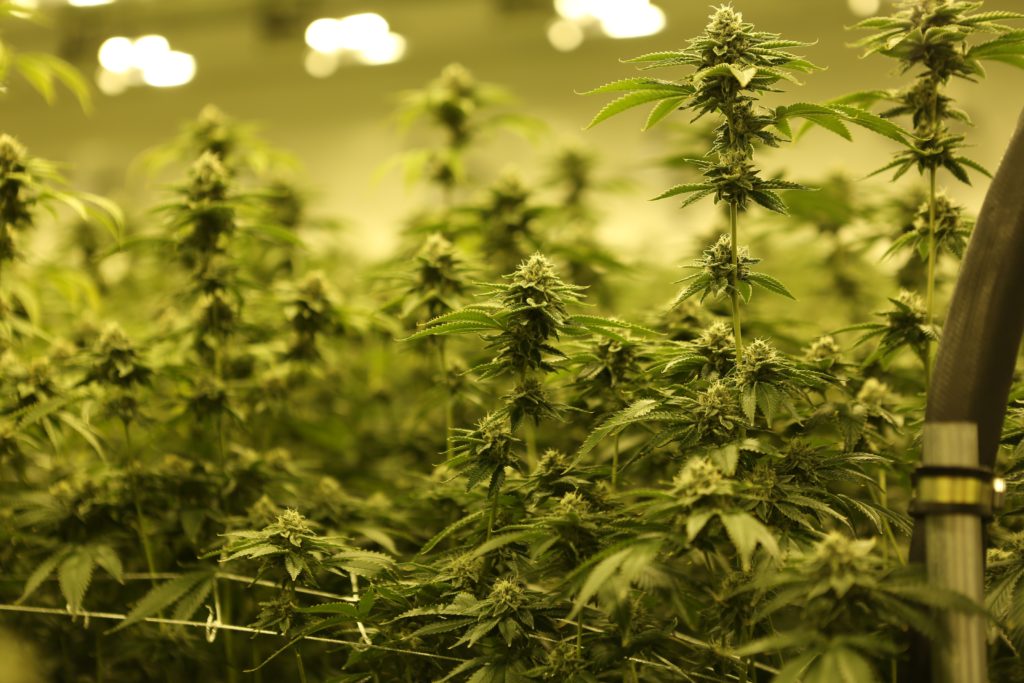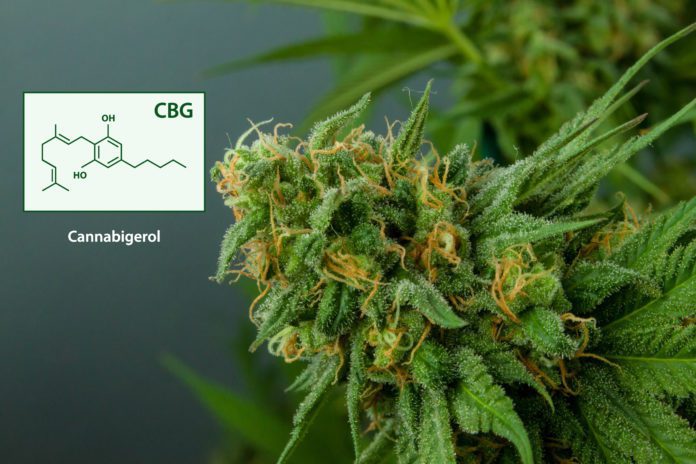What is CBG? Cannabigerol, or CBG, is a cannabinoid found in the cannabis plant. Unlike other cannabinoids such as THC and CBD, Cannabigerol is not psychoactive. This means it does not provide the “high” that comes from marijuana use. However, cannabigerol does have some unique medical properties that make it an interesting therapeutic option for patients with a variety of illnesses. In this blog post, we will discuss the medical benefits of Cannabigerol and how it can be used to treat various conditions.
What is CBG?
Cannabidiol (CBD) and Cannabigerol (CBG) are frequently confused by newcomers. The funny thing is that scientists once thought Cannabigerol (CBG) was a minor cannabinoid. It’s quite rare in most hemp flower strains, and when it decarboxylates, most of it disappears since it forms into additional cannabinoids. As a result, scientists didn’t realize that it was the “mother” cannabinoid all this time.
The most popular cannabinoids, THC (tetrahydrocannabinol) and CBD (cannabidiol), and their effects might seem like common knowledge to you if you’ve spent any time online (such as here) or at your local dispensary. However, as both the science and legislation surrounding cannabis study improve, so does our access to the rest of the 100+ cannabinoids present in the plant, each with its own unique set of properties and effects.
Is CBG a psychoactive component?
CBG is non-psychoactive, so it will not get you high, but it is thought to work synergistically with other cannabinoids like THC and CBD to enhance their therapeutic effects.
The origins of CBG
All cannabinoids lead back to CBG. And while you may not have heard about CBG, humans have reaped its benefits for millennia. Like many other cannabinoids, CBG was first isolated in the 1960s by Raphael Mechoulam and his team while they were researching the chemistry of hashish. At the time, very little was known about the cannabis plant and its vast array of compounds (480 and counting).
How does CBG work?
Cannabigerol (CBG) plays a major role in the biosynthesis of other cannabinoids, including tetrahydrocannabinolic acid (THCA), cannabidiolic acid (CBDA), and cannabichromenic acid (CBCA). CBG is produced by enzymatic decarboxylation of Cannabigerolic acid (CBGA), which is the parent molecule of all cannabinoids. In turn, THCA and CBDA can be further decarboxylated to create THC and CBD, respectively.
CBG interacts with the endocannabinoid system, which is responsible for maintaining homeostasis in the body. The endocannabinoid system regulates many physiological processes, including pain perception, immune function, and mood. CBG binds to CB1 and CB2 receptors, which are located in the brain and throughout the body. CB1 receptors are mostly found in the central nervous system, while CB2 receptors are predominantly found in the periphery. CBG has been shown to modulate both CB1 and CB2 activity.
So when you’re consuming CBD, THC, or any other cannabinoid, you can thank CBG for giving you the experience you’re after.
CBG and the Endocannabinoid System
The human body’s endocannabinoid system (ECS) is a vital network that helps to keep the body in a state of homeostasis. This system is made up of innumerable receptors that are located throughout the limbs, organs, nerves, and systems of the body. These receptors play an important role in regulating many functions, including the digestive, immune, and reproductive systems.
The ECS is responsible for maintaining balance within the body, and it does this by ensuring that all of the various systems are working correctly. Without the ECS, the body would be unable to function properly and would be at risk of serious health problems. Thankfully, this vital system is always working hard to keep us healthy and balanced.

The human body creates its own cannabinoids when it needs them, which bind to CB1 and CB2 receptors in the peripheral and central nervous systems. Dr. Jokūbas Žiburkus, an associate professor from the University of Houston and Director of Florance World, said at the recent EuroAm conference in Prague that the endocannabinoid system regulates a far wider range of bodily functions than we realize, including runner’s high and the enjoyment effect on babies who receive their mother’s milk.
Cannabigerol (CBG) activates two types of neuroreceptors that have a significant role in mental health and well-being. CBG binds to alpha-2 receptors, which acts on the parasympathetic nervous system and can result in lower blood pressure and less stress and anxiety. CBG also interacts with 5-HT1A receptors in the brain’s nervous system, which influence serotonin levels and cognitive performance. CBG’s capacity to regulate 5-HT1A receptor activity might be beneficial in the treatment of clinical depression and anxiety disorders, as well as memory and learning.
Health Benefits of CBG
Interestingly, CBG itself does not appear to be psychoactive, but it does exhibit some therapeutic properties. For example, it has been shown to possess antibacterial and anti-inflammatory activity. Additionally, CBG may help to protect neurons from damage and enhance their growth and survival. Therefore, although CBG is a minor cannabinoid, it plays an important role in the overall effects of cannabis.
According to a 2021 patient survey, the majority of patients found CBG-dominant treatments effective in treating chronic pain, anxiety, and sleeplessness, among other issues.

Even though further research is needed, CBG has been shown to have a variety of health advantages, including the following:
- CBG has been found to have anti-inflammatory effects, which may help with a variety of inflammatory illnesses.
- Chronic inflammation is linked to several chronic health problems, including diabetes, metabolic syndrome, heart disease, cancer, rheumatoid arthritis, inflammatory bowel disease, asthma, and chronic obstructive lung disease. CBG has shown promise in treating neuroinflammation and oxidative stress in Parkinson’s, Alzheimer’s, and Huntington’s disease patients.
- CBG appears to have therapeutic potential in the treatment of certain types of cancer, according to recent studies. CBG was found to have a strong anti-tumor effect on gastrointestinal cancer cells in a recently published research. CBG’s potential use in treating colorectal tumors is being investigated further.
- CBG has been shown to reduce neuroinflammation and has neuroprotective effects, as well as the ability to stimulate neurogenesis. CBG and CBD have also been found to have neuroprotective effects when combined, suggesting that the resulting medley offers better anti-inflammatory and antioxidant properties than either ingredient alone.
- CBG was found to be effective in reducing acetylcholine-induced bladder contractions, according to researchers at the University of Naples. This finding might open the door for new cannabinoid therapies for conditions such as overactive bladder syndrome, irritable bowel syndrome, and other disorders.
- Bone growth and development has been observed in CBG and, when taken alone or in conjunction with other cannabinoids, it is thought to aid in the reduction of age-related bone loss.
- CBG has antibacterial and antimicrobial effects. CBG was found to have antibacterial activity against drug-resistant staph bacteria called MSRA, which is becoming more common in hospital settings, according to a new study from McMaster University. This finding may lead to the creation of new antibiotic treatments that are effective against MSRA and other drug-resistant staph infections.
- Moreover, CBG has shown promise in increasing the production of anandamide, a natural mood-elevating endocannabinoid often referred to as the “bliss molecule.” Anandamide is known to trigger the brain’s reward response and provide feelings of happiness and well-being. Increased levels of anandamide have also been shown to have a mitigating effect on stress and fear-related behaviors and disorders, including PTSD. CBG may offer a natural alternative for those seeking relief from the symptoms of these conditions.
- CBG has been shown to stimulate appetite in animals with no adverse effects, which could be beneficial for treating conditions like cancer-related loss of appetite and anorexia. These findings suggest that CBG may be a safe and effective treatment for these conditions, with further research needed to confirm these effects in humans.
As further study is conducted, additional and potentially more accurate claims may be confirmed. Sociedelic will continue to keep you informed on the latest developments in cannabis-based medications and therapies, including CBG, as new findings are revealed.
Is it legal to produce and consume CBG strains?
The 2018 Farm Bill made a historic change to U.S. drug policy by legalizing hemp plants that contain less than 0.3% THC. This shift has created new opportunities for farmers, who can now grow and sell CBD-rich hemp without running afoul of the law. And while CBD is the most well-known compound found in hemp plants, it is far from the only one. CBGA is also present in hemp, and this cannabinoid is directly responsible for the plants’ CBG and CBD potency. As a result, farmers can now derive CBG from hemp plants, opening up a whole new market for this promising compound. With the 2018 Farm Bill, hemp farmers finally have the chance to thrive.

CBG Strains
Breeders have taken Cannabigerol (CBG) levels higher by crossbreeding plants to achieve higher cannabinoid levels. Oregon CBD farms have won several accolades for their White CBG variety, including being named one of High Times’ Top Ten Strains, which has approximately 10% CBG and less than 0.3 percent THC.
These strains can be difficult to find, but they offer a unique set of potential benefits.
Critical CBG is a unique cannabis strain. Critical CBG seeds produce flowers with THC concentrations of less than 0.2 percent and CBG levels of up to 10%, making it a game-changer for the medical industry. Additionally, because of its low THC content, this marijuana is essentially unrestricted worldwide. The high percentage of CBG (10%) and CBD (10%) in the hemp plant makes it an ideal source for supplements containing both compounds. The genetics include: Critical (Afghan x Skunk) x CBG, (60% Indica, 40% Sativa).
From Amsterdam to your doorstep, Shayana offers a big range of cannabis strains, including Critical CBG.
White CBG: This strain is a cross between White Widow and an unknown CBG-rich variety. It offers a balance of THC and CBD, with high levels of CBG. Botany Farms, a seasoned cultivator of non-psychoactive buds, provides a CBG bud with approximately 18.5% CBG and less than 0.3% THC.
Jack Frost was one of the first high-CBG hemp strains developed by farmers. Because the CBG molecule rapidly transforms into CBC, CBD, and THC without rigorous cultivation, high-CBG hemp blooms are just now becoming available on the market. Jack Frost CBG is a cross between White Widow, Jack Herer, and Northern Lights #5.
The CBG Blend is a cross between Pink Lemonade, Black Cherry Soda, Original Glue, and Ace of Spades. This thick and leafy plant produces medium-sized buds with a light layer of trichomes and a sweet citrus flavor profile enhanced with cheesy undertones.
Pink Lemonade is a cannabis hybrid strain created by crossing Lemon Skunk with Purple Kush. This strain produces soothing effects that flood the mind and radiate throughout the body. Pink Lemonade has a peachy aroma with notes of lemon and grapefruit on the exhale and tastes similar to fruity, mentholated tea. The strain Pink Lemonade is used to alleviate symptoms including focus, stress, and sadness in medical marijuana patients.
The White Widow CBG is a high-CBD hybrid strain that improves upon the original with even higher CBG levels. This layer of crystals on the flowers, as well as a pleasant sense of euphoria, adds to the appeal of this strain. The legendary cannabis strain is now available in hemp flower form, with a whopping 16.7% CBGA content, .04%CBD-V content, and less than .3% THC concentration.
Check out our post if you want to know more about Cannabis Seeds types.
Benefits that you may experience after using CBG
- Euphoria
- Positivity
- Happiness
- Relaxation
- Uplift
- Visual/Mental Clarity
- Cheerfulness
- Contentment
- Focus
- Calm
Is CBD or CBG Better?
The debate between CBD and CBG has been carried on by many people in the cannabis community. Both compounds offer a wide range of potential benefits, but which one is better?
CBD is known for its ability to help with anxiety, pain, and inflammation. It is also being studied for its potential to treat a variety of other conditions, such as epilepsy and cancer.
CBG, on the other hand, is known for its antibiotic and antibacterial properties. It is also being studied for its potential to treat conditions like glaucoma and Crohn’s disease.
So, which one is better?
The answer may depend on your individual needs. If you are looking for relief from anxiety or pain, CBD may be a better option for you. If you are looking for an anti-inflammatory or antibacterial agent, CBG may be a better choice.
It is also important to keep in mind that CBD and CBG work best when they are used together. This is because they have complementary effects that can provide greater relief than either one could on its own.
CBD works in a roundabout manner. It does not engage directly with your body’s endocannabinoid system. CBG acts on the CB1 and CB2 receptors in your brain, (as does THC), which may be beneficial if CBD doesn’t work for you. That is another reason it has been labeled a specialty among cannabinoids.
CBG has one disadvantage: to obtain the maximum strength, it must be harvested sooner. Instead of letting hemp flower for the whole eight-week blooming period, growers must harvest by week six to get the most CBG content. For a larger yield of hemp buds, CBD flowers can be kept for a couple of weeks longer.
Final Toughts
We hope that this post has provided you with more information about CBG. Have you had a chance to try any of the CBG strains we’ve mentioned? Let us know what you think in the comments below! Thanks for reading.
Did you find this article useful? There are hundreds of articles similar to this one on our website, so keep surfing to discover more.
Sociedelic only uses high-quality resources, such as peer-reviewed research, to back up the facts in our articles. We double-check medical statements, claims, and recommendations against the most up-to-date primary sources, such as peer-reviewed medical journals, government organizations, academic institutions, and advocacy groups.
